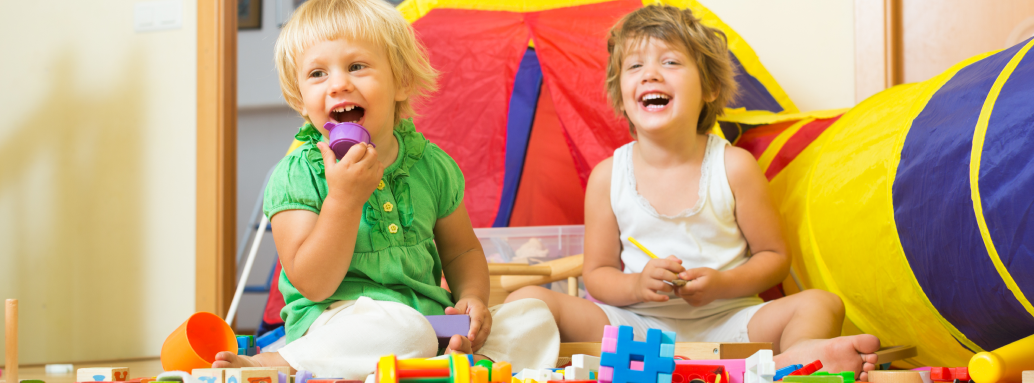You've heard the saying, "Education is the key to success," right? But what's the key to successful education? A big part of it lies in the classroom environment.
In the ever-evolving landscape of education, creating a positive and inclusive classroom environment stands as a cornerstone for fostering students' holistic development. This article delves into the significance of such an environment, the key elements that constitute it, the pivotal role teachers play, and practical strategies to implement inclusivity effectively. Let's dive in!
The Importance of a Positive and Inclusive Classroom Environment
Why is a positive classroom so crucial? Imagine learning in an environment where you feel safe, accepted, and eager to participate. Sounds like a dream, doesn’t it? A positive atmosphere not only fosters learning but also nurtures the emotional growth of students.
Enhancing Learning Outcomes
A positive and inclusive classroom transcends mere academics. It becomes a space where students feel valued and safe, thereby enabling them to focus on learning. When students are comfortable expressing themselves, their cognitive abilities flourish.
Boosting Student Confidence
Inclusion instills a sense of belonging and self-worth in students. When they see themselves reflected in the classroom and their experiences acknowledged, their confidence soars. This newfound confidence fuels their academic and personal growth.
Fostering Empathy and Acceptance
In an inclusive setting, students interact with peers from diverse backgrounds. This interaction cultivates empathy and acceptance, essential life skills that extend far beyond the classroom.
Key Elements of a Positive and Inclusive Classroom
Inclusivity is like making sure everyone at a party feels welcome, no matter their background or needs. In education, it's about ensuring every student gets a fair chance to learn and grow. It involves adapting and understanding – and it's totally worth it.
Respectful Communication
A positive classroom culture begins with respectful communication. Teachers model this behavior, setting the tone for interactions among students. Active listening, empathy, and conflict resolution are vital components.
Diverse Representation
Diversity in curricular materials, classroom decor, and teaching staff is essential. It ensures that students from all backgrounds feel represented and recognized.
Adaptive Teaching Strategies
Teachers employ varied teaching strategies to accommodate diverse learning styles and abilities. Differentiated instruction and Universal Design for Learning (UDL) are key methods.
Teachers' Role in Creating an Inclusive Environment
Teachers aren't just educators; they're influencers. With the right approach, they can shape minds and build the future.
Setting Clear Expectations
Teachers must establish clear expectations for behavior and inclusion from day one. These expectations serve as guidelines for creating a respectful and inclusive classroom.
Building Relationships
Developing positive relationships with students is paramount. It fosters trust, making students more likely to engage and share their thoughts and concerns.
Addressing Bias and Stereotypes
Teachers should be vigilant about addressing biases and stereotypes. They should encourage open discussions about these issues to promote understanding and empathy.
Inclusive Classroom Activities and Practices
Group Work and Collaboration
Group activities encourage teamwork and social skills. They also enable students to learn from their peers and develop a sense of camaraderie.
Differentiated Instruction
Teachers tailor instruction to individual students' needs, ensuring that every student can access the curriculum at their own level.
Universal Design for Learning (UDL)
UDL principles guide the creation of inclusive lesson plans that cater to a broad range of learning preferences.
Supporting Students with Diverse Needs
Special Education Inclusion
Inclusive classrooms welcome students with special needs, providing necessary support and accommodations.
English Language Learners (ELL)
Teachers adapt their teaching methods to aid students who are learning English as a second language, making content more accessible.
Gifted and Talented Students
Inclusivity also extends to gifted and talented students, who may require enrichment opportunities to thrive.
Community Involvement and Parent Engagement
Partnership with Parents and Guardians
Collaboration between teachers and parents ensures that students receive consistent support at home and school.
Community Resources
Engaging with the local community can provide additional resources and opportunities for students.
Challenges and Solutions in Inclusive Classrooms
Overcoming Resistance
Resistance to inclusivity may arise. Professional development and dialogue can help educators address and overcome these challenges.
Professional Development
Continuous learning and development are crucial for teachers to effectively implement inclusive practices.
Monitoring and Adaptation
Regular assessment and adaptation of inclusive strategies are essential to ensure they remain effective.
Benefits of a Positive and Inclusive Classroom for Teachers
Professional Growth
Teachers also benefit from creating inclusive classrooms. It enhances their skills, adaptability, and professional growth.
Job Satisfaction
A positive classroom environment translates to higher job satisfaction, contributing to teacher retention.
Steps to Create a Positive and Inclusive Environment
Let’s unravel the steps, shall we?
Foster Emotional Well-being
Remember when you felt scared as a kid? Now imagine if that was in school. No fun, right?
- Importance of Emotional Intelligence Being emotionally intelligent is like having a superpower. It helps teachers understand students’ needs and address them appropriately.
- Techniques to Ensure Emotional Safety Simple things can make a difference. Regular feedback, open communication channels, and creating a no-judgment zone can work wonders.
Encourage Active Participation
Want to know a secret? The more involved students are, the more they learn.
- Inclusion Activities and Icebreakers Ever tried building a tower with spaghetti? Activities like these can break the ice and get everyone involved.
- Fostering Group Dynamics Teamwork makes the dream work! Promote group activities to build a sense of community.
Embrace Diversity and Differences
Here's a thought: if we were all the same, how boring would that be?
- Incorporating Diverse Learning Materials Using books and materials from various cultures makes learning rich and colorful.
- Recognizing and Respecting Varied Backgrounds Remember, every student has a story. Respect it, and they'll flourish.
Measuring the Success of an Inclusive Classroom
Measuring the success of an inclusive classroom goes beyond mere test scores. Success in such an environment encompasses various facets, including the emotional, social, and academic growth of all students. Let's delve into how we can effectively gauge the impact and success of an inclusive setting.
Observing Emotional and Social Growth
The core of an inclusive classroom lies in its ability to cultivate emotional intelligence and social skills. So, how do students interact with one another? Do they display empathy, understanding, and cooperation?
-
Peer Interactions: Watch out for how students interact. Is there mutual respect? Do students display patience and support towards those who might learn at a different pace or in different ways?
-
Conflict Resolution: How do students resolve conflicts? In an inclusive classroom, students should ideally be equipped with tools to communicate, understand, and resolve issues maturely.
Academic Progress of All Students
While academic achievements shouldn't be the only metric, they're undoubtedly important. The key is to recognize progress and growth.
-
Personalized Goals: Set individual learning goals for each student. This ensures that every student, regardless of their starting point, is growing and progressing.
-
Diverse Learning Strategies: Are various teaching methods being employed? A successful inclusive classroom often utilizes multiple strategies catering to different learning styles.
Feedback from Students and Parents
The individuals directly impacted by the classroom environment can provide valuable insights.
-
Student Feedback: Regularly check in with students. Do they feel seen, heard, and valued? Do they feel confident in expressing their thoughts and needs?
-
Parental Feedback: Parents can offer a unique perspective on their child's experience. Engage with them to gauge if they feel their child is supported and progressing.
Active Participation and Engagement
An inclusive classroom should buzz with activity!
-
Classroom Participation: Are all students actively participating, both in group activities and individual tasks? Look for signs of engagement and enthusiasm.
-
Extracurricular Involvement: Are students of all abilities participating in extracurricular activities? Their involvement can indicate a sense of belonging.
Reviewing Classroom Dynamics and Culture
It's the little things that often indicate a thriving inclusive environment.
-
Collaborative Atmosphere: A collaborative spirit where students work together, learn from each other, and feel a part of a team is a great sign.
-
Celebrating Diversity: Do you notice celebrations or acknowledgments of various cultures, backgrounds, and abilities? This can indicate a genuine appreciation of diversity.
Real-Life Success Stories
The power of inclusive education isn't just found in research papers or theoretical frameworks. It manifests in real-life scenarios where students, educators, and entire communities reap the benefits. Here are some success stories that put a face to the cause.
Alex’s Triumph Over Autism
Alex was diagnosed with autism spectrum disorder. In a traditional classroom setup, he often felt overwhelmed and isolated. However, when shifted to an inclusive classroom, things started changing.
- Personalized Learning Approach: Teachers adopted a tailored teaching methodology for Alex, incorporating visual aids and sensory tools.
- Peer Support: Over time, Alex's classmates became his allies. They collaborated on projects, ensuring Alex was an integral part of the team.
- Outcome: Today, Alex is a confident high school graduate, with friends and memories to cherish.
Maria’s Journey from ESL to English Prodigy
Maria moved from Mexico at the age of 10, speaking very little English. Initially placed in English as a Second Language (ESL) programs, she later transitioned to an inclusive classroom.
- Bilingual Support: Educators incorporated bilingual resources, enabling Maria to grasp concepts in both languages.
- Cultural Inclusion: The class often celebrated diverse traditions, making Maria feel seen and valued.
- Outcome: Maria not only mastered English but also became an eloquent debater in her school, crediting her success to the supportive inclusive environment.
Sarah and Her Wheelchair Don’t Hold Back
Born with a congenital disorder, Sarah uses a wheelchair. But in her inclusive classroom, her wheelchair wasn't a barrier but just another facet of diversity.
- Accessible Infrastructure: The school ensured ramps, modified desks, and accessible resources for Sarah.
- Peer Involvement: Sarah's peers ensured she was always part of field trips, plays, and activities.
- Outcome: Sarah excels academically and is a beacon of motivation for her classmates, proving that determination and an inclusive environment can overcome any obstacle.
Jayden’s Dyslexia Doesn’t Define Him
Jayden has dyslexia, making traditional reading and writing challenging. But his inclusive classroom recognized his potential beyond this challenge.
- Tech-Aided Learning: Jayden was provided with digital tools, like screen readers and audio books.
- Empathetic Peers: Jayden's classmates celebrated his strengths, while also assisting where he faced challenges.
- Outcome: With determination and the right support, Jayden developed a love for literature and aspires to be a writer.
Conclusion
Creating a positive and inclusive classroom environment is not just a pedagogical choice; it's a commitment to nurturing a generation that values diversity, empathy, and lifelong learning. Creating a positive and inclusive classroom isn't just a goal; it's a necessity. With the right mindset and tools, we can shape the future, one student at a time. As educators, it's our collective responsibility to foster an environment where every student thrives.
FAQs
-
What is the primary goal of an inclusive classroom? The primary goal of an inclusive classroom is to provide a learning environment where all students, regardless of their background or abilities, can actively participate and succeed academically and socially.
-
How can teachers address bias and stereotypes in the classroom? Teachers can address bias and stereotypes by promoting open discussions, providing diverse perspectives in the curriculum, and modeling inclusive behavior.
-
What are some benefits of differentiated instruction? Differentiated instruction benefits students by allowing them to learn at their own pace and according to their unique learning styles, ultimately improving their comprehension and retention of the material.
-
Why is community involvement important in education? Community involvement enhances students' educational experiences by providing additional resources and opportunities, and it fosters a sense of belonging and support.
-
How can teachers overcome resistance to inclusive practices? Teachers can overcome resistance through professional development, fostering open dialogue, and showcasing the benefits of inclusivity through real-life success stories.
Billing, Invoicing Automation & Smart Finances
Communication & Engagement
Child Development & Progress
Waitlist, Forms & Attendance
Effortless Team Management
Daily Updates That Matter
Templates & Printables
Blogs
Webinars
Case Studies & Testimonials
FAQs
Help Center



